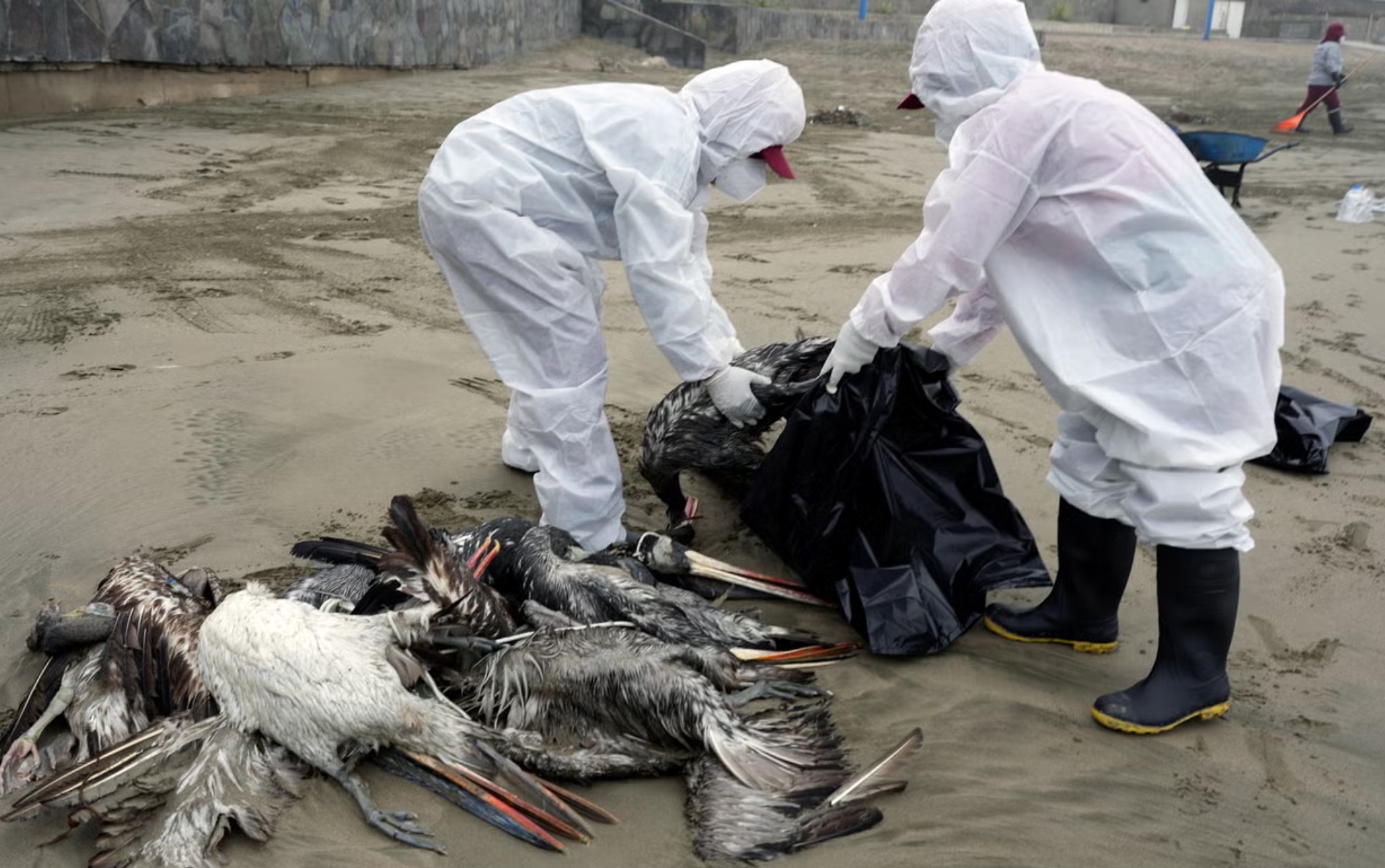By LNS Young Worker Organizer Martina Manicastri
Since April of 2024, the U.S. has documented an unprecedented 70 known cases of H5N1, or “bird flu,” among dairy and poultry farmworkers. This June, the CDC confirmed that bird flu is capable of airborne transmission, a finding that comes from a dairy worker in Michigan who is now known to have contracted bird flu via airborne transmission while interacting with sick cattle. While there is currently no evidence of human-to-human airborne transmission, this development presents a new threat that raises H5N1’s pandemic potential. Under the Trump administration, which is dismantling infectious disease research and tracking, and rebuking vaccination standards, this threat is even higher.
Bird flu is not just a threat to humanity, it is a threat to wildlife, and researchers have reported “mass die-offs” of wild birds and mammals like sea lions in the last three years alone. What makes this round of bird flu different from past iterations is the virus’s evolution that allows birds to migrate further before dying. As wildfires and droughts become more common and disastrous, we are seeing major disruptions to bird migration, with birds also landing in more populous centers or near farms in search of water, further proliferating the spread. The spread of bird flu illustrates how the effects of climate change ramify in all spheres of life.
Dairy and farmworkers’ exposure to H5N1, which can be fatal, will only increase as we allow it to spread unmitigated. While the CDC recommends the use of PPE (personal protective equipment) for farmworkers, employers rarely provide it, and given the use of undocumented labor on farms, workers are even less likely to make demands for protection or report their illness. The labor movement must be prepared to fight for farmworkers on the frontlines of a potential H5N1 pandemic and begin taking the threat of climate change’s impacts on workers seriously by prioritizing climate demands in bargaining and strike planning.
